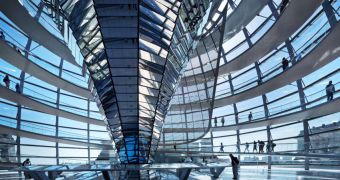We already know there are some pretty ambitious plans on the European Union member countries’ table, and many remain skeptical about their chances of success. One of the implications is the increased adoption of energy efficiency measures in commercial buildings across the continent.
The EU aims at increasing the proportion of renewable energy to 20 percent and 20 percent cuts in overall energy consumption, while at the same time reducing greenhouse gas emissions to 20 percent below 1990 levels, all by 2020.
Also, new buildings and major renovation in the European Union are projected to be “nearly zero energy” by 2021.
A recent study from Pike Research the amount of certified green building space in Europe will nearly quadruple, to 687 million square meters, by 2016.
“Not only are energy prices currently high, but price volatility and future carbon legislation present significant risks to organizations as future energy costs could rise unpredictably,” says research analyst Eric Bloom. “As a result, the percentage of total building space that is certified green will increase from less than 1% in 2010 to more than 2% in 2016.”
Of the 30 billion sqm of floorspace in Western and Eastern Europe, 74% is residential, and 2% is affected annually by new construction or major renovation. Certified green building space will increase from less than 1% in 2010, to more than 2% in 2016, and is already 2% in France.
The largest markets for energy-efficient buildings in Europe are Germany and France, which each represents a market comparable in size to the rest of Europe, including Eastern Europe and Russia.
In Germany, where the market is relatively fragmented by region, the decision to abandon nuclear power and shift to renewables in the coming decade has accelerated the push for energy efficiency in buildings.
France, meanwhile, has instituted a national energy plan called the “Grenelle de l’Environnement” that aims to establish France as the least carbon-intensive country in the European Union.
Already, a quarter of new construction in France requests green building certification. In Germany, half the cities now require Passive House construction in new public buildings.

 14 DAY TRIAL //
14 DAY TRIAL //